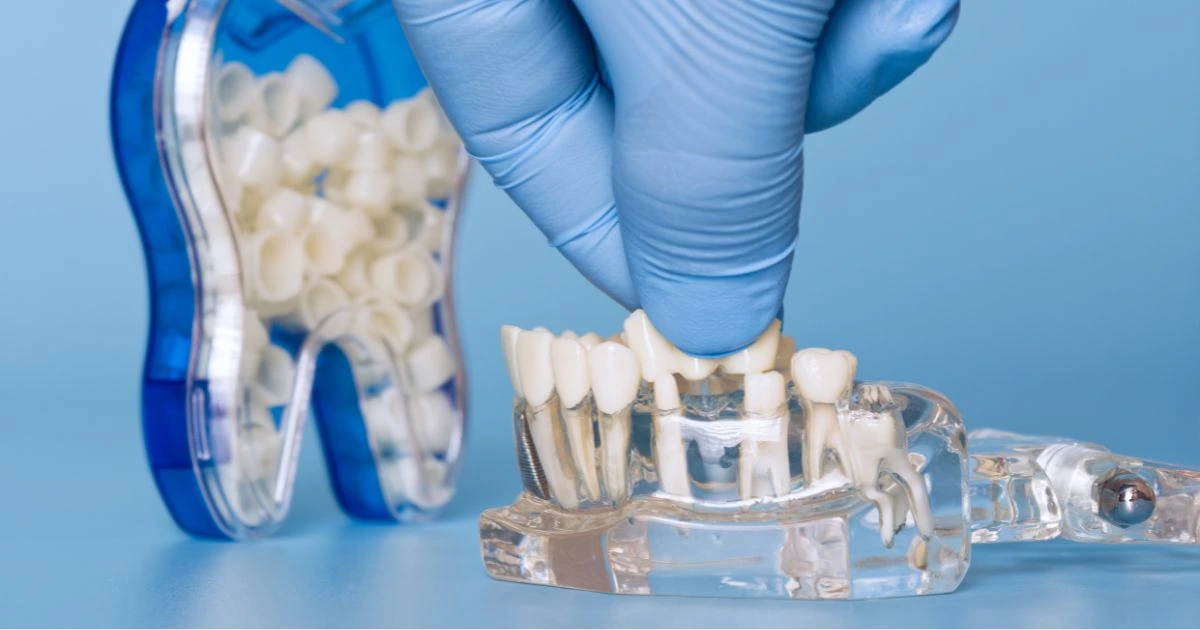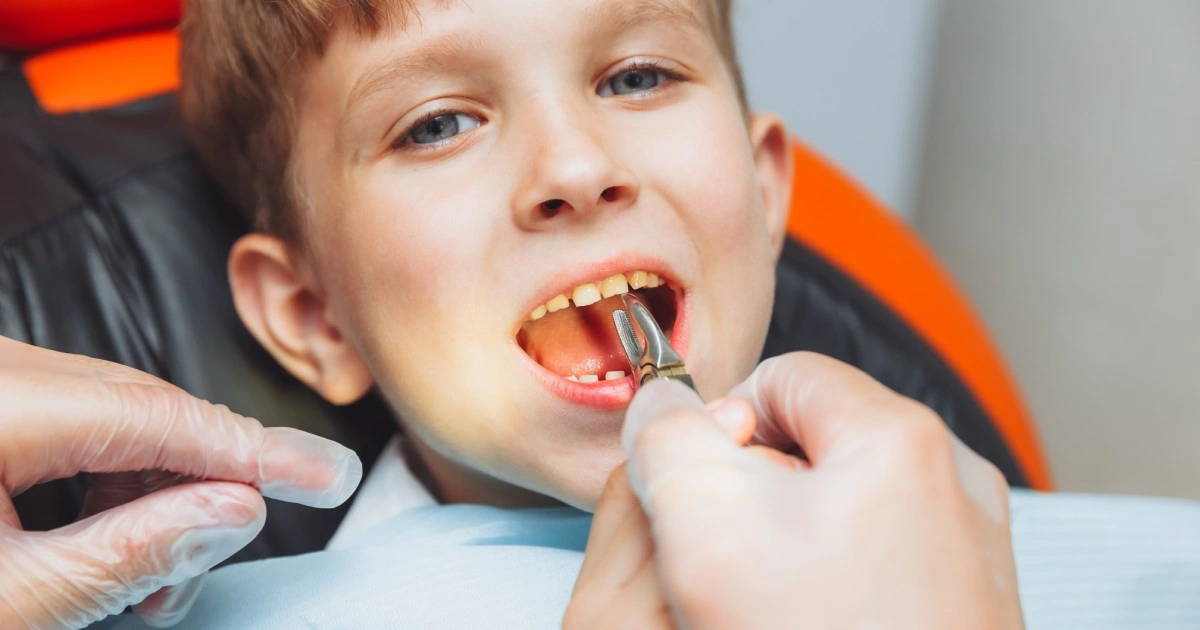Introduction
As a parent, you want the best for your child’s health, including their dental health. One common question is, “At what age can a kid have a dental filling?” This comprehensive guide will help you understand pediatric dental care and when dental fillings might be necessary for your little one. We’ll explore the ins and outs of children’s dental health, cavity prevention, and treatment options, ensuring you have all the information you need to choose the best dental care for your child.
Understanding Dental Fillings for Children
Cavities are commonly treated with dental fillings in adults and children. They help restore the tooth’s structure and prevent further decay. But the approach to dental fillings can be a bit different when it comes to kids.
What is a Dental Filling?
Before we dive into the specifics of pediatric dental fillings, let’s understand what a dental filling is:
- Purpose: A filling is used to repair a tooth damaged by decay, restoring its normal function and shape.
- Procedure: The dentist removes decayed tooth material, cleans the affected area, and fills the cleaned-out cavity with a filling material.
- A variety of materials can be used to make fillings, including amalgam (silver), composite (plastic) resins, or glass ionomer.
When Might a Child Need a Dental Filling?
Children can develop cavities at any age, even in their baby teeth. The need for a filling is not determined by age but by the presence and severity of tooth decay. Some key points to consider:
- Baby teeth are important: They hold space for permanent teeth and aid in speech development.
- Cavities that go untreated can cause pain, infection, and difficulties in eating or speaking.
- It is possible to prevent more serious dental problems in the future.
- Even very young children can get cavities, which are often called “baby bottle tooth decay” when they occur in infants.
The Right Age for Dental Fillings
No specific age at which a child becomes eligible for a dental filling exists. The decision depends on several factors:
- The extent of tooth decay: Mild decay might be treatable with other methods, while more severe decay may require a filling.
- The child’s ability to cooperate during the procedure: Some very young children may have difficulty sitting still for the time required to complete a filling.
- The tooth’s proximity to falling out naturally: If a baby’s tooth is close to falling out, the dentist might recommend monitoring it instead of filling it.
- The child’s overall health: Some medical conditions might affect the decision to perform a dental filling.
At Solomon Kids Dentistry, we assess each case individually. Our approach is to allow children to demonstrate what they can tolerate in the dental chair. We’re always happy to work around their needs and abilities to ensure the best dental work is done.
Signs Your Child Might Need a Dental Filling
As a parent, it’s important to be aware of signs that might indicate your child needs a dental filling. These can be:
- Teeth with visible holes or dark spots
- Food and drink sensitivity to hot, cold, or sweet
- Pain when biting or chewing
- Food getting stuck in certain teeth regularly
- Complaints of toothache or dental pain
Scheduling a dental appointment as soon as possible is crucial.
The Importance of Regular Dental Check-ups
Maintaining your child’s oral health requires regular dental visits. Here’s why:
- Early detection of cavities: Regular check-ups allow dentists to spot cavities early when they’re easier to treat.
- Professional cleaning to prevent decay: Dentists can clean hard-to-reach areas with regular brushing and flossing.
- Opportunity for dental education: These visits allow children and parents to learn about proper oral hygiene.
- Establishing good oral hygiene habits: Regular visits help children become comfortable with dental care routines.
- Monitoring dental development: Dentists can track how your child’s teeth and jaws are developing.
We recommend bringing your child for a checkup by their first birthday or within six months of their first tooth appearing. After that, visits should typically occur every six months unless your dentist recommends otherwise.
Preventing Cavities in Children
It is always better to prevent than to cure, especially when it comes to dental health. Here are some detailed tips to help prevent cavities in your child:
1. Establish a Good Oral Hygiene Routine Early
- Start cleaning your baby’s gums even before teeth appear.
- Use a soft, age-appropriate toothbrush and a smear (about the size of a grain of rice) of fluoride toothpaste for children under 3.
- Use a pea-sized amount of fluoride toothpaste for children 3-6 years old.
- Supervise brushing until you’re confident your child can brush effectively (usually around age 7-8).
- Encourage brushing twice a day, especially before bedtime.
2. Limit Sugary Foods and Drinks
- Don’t give your baby a bottle of milk or juice.
- Snacks and drinks with sugar should be limited, especially between meals.
- Drink water between meals as a primary beverage.
- If serving juice, dilute it with water and serve it with meals.
3. Consider Dental Sealants for Additional Protection
- The chewing surfaces of back teeth are coated with thin, protective coatings called sealings.
- They can prevent up to 80% of cavities in molars, where most cavities in children occur.
- Ask your dentist if sealants are right for your child.
4. Ensure Your Child Gets Enough Fluoride
- The fluoride in fluoride helps strengthen tooth enamel, making it more resistant to decay.
- Most community water supplies are fluoridated, but ask your dentist about fluoride supplements if yours aren’t.
- Use fluoride toothpaste appropriate for your child’s age.
5. Encourage a Healthy Diet
- Provide a balanced diet rich in fruits, vegetables, whole grains, and lean proteins.
- Limit sticky, sugary foods like candies and dried fruits that can cling to teeth.
- Cheese, yogurt, and other dairy products can help neutralize acids in the mouth.
What to Expect During a Pediatric Dental Filling Procedure
If your child does need a filling, here’s a detailed breakdown of what you can expect:
1. Preparation
- The dentist will explain the procedure to you and your child in age-appropriate terms.
- Your child will be made comfortable in the dental chair.
- Protective eyewear may be provided for your child.
2. Numbing the Area (if necessary)
- The dentist may use a local anesthetic to numb the area for deeper cavities.
- This is often administered as a gel followed by a small injection.
- The dentist will ensure the area is fully numb before proceeding.
3. Removing the Decayed Portion of the Tooth
- The dentist will use special tools to remove the decayed part of the tooth.
- This process is usually quick and painless due to the numbing.
4. Filling the Cavity
- Once all decay is removed, the dentist will clean and prepare the tooth for filling.
- The appropriate filling material will be placed into the cavity.
- For tooth-colored fillings, a special light may be used to harden the material.
5. Shaping and Polishing the Filling
- The dentist will shape the filling to match your child’s bite.
- The filling will be polished to feel smooth and natural.
6. Final Check and Instructions
- The dentist will check your child’s bite to ensure the filling isn’t too high.
- You’ll receive care instructions for the filled tooth and your child’s overall dental health.
At Solomon Kids Dentistry, we use child-friendly techniques and equipment to make the experience as comfortable as possible for your little one. Our team is trained to explain procedures in ways children can understand, helping to alleviate any fears or anxieties.
Choosing the Right Pediatric Dentist
When it comes to kids dental care, choosing the right dentist is crucial. Here’s what sets Solomon Kids Dentistry apart:
1. Accessibility
- We’re open 6 days a week with extended hours to accommodate your busy schedule.
- Multiple convenient locations make it easy to find a dentist near you.
2. Affordability
- We’re in-network with over 197 insurance providers to ensure quality care is accessible to all families.
- Our team can help you understand your insurance benefits and explore payment options.
3. State-of-the-art Equipment
- We continually update our techniques and equipment to provide the best care possible.
- Our comfortable chairs and modern technology help make dental visits more pleasant for kids.
4. Child-centered Approach
- We tailor our treatments to each child’s unique needs and comfort level.
- Our staff is trained in behavior management techniques to help anxious children feel at ease.
5. Comprehensive Care
- We offer a full range of pediatric dental services, from routine check-ups to more complex procedures.
- Our team can provide guidance on all aspects of your child’s oral health.
6. Ongoing Education
- We believe in empowering parents and children with knowledge about dental health.
- Our team stays up-to-date with the latest in pediatric dentistry to provide the best possible care.
FAQs About Pediatric Dental Fillings
To address some common concerns parents might have, here are answers to frequently asked questions about pediatric dental fillings:
- Q: Are dental fillings safe for children? A: Yes, dental fillings are safe and have been used in pediatric dentistry for many years. The materials used are thoroughly tested and approved for use in children.
- Q: Will getting a filling hurt my child? A: With modern techniques and anesthesia, the filling process should not be painful. Your child might feel some pressure or vibration, but shouldn’t experience pain.
- Q: How long does a dental filling last in a child’s tooth? A: The lifespan of a filling can vary, but with good oral hygiene, a filling can last until the baby tooth falls out naturally.
- Q: Can my child eat normally after getting a filling? A: Once the anesthesia wears off, your child should be able to eat normally. However, it’s best to avoid very hot or cold foods for the first day or two.
- Q: What if my child is too anxious to sit still for a filling? A: At Solomon Kids Dentistry, we have various techniques to help anxious children. In some cases, we might recommend sedation dentistry options.
Conclusion: Partnering for Your Child’s Dental Health
Dental fillings can be necessary at any age, depending on your child’s individual needs. Regular check-ups, good oral hygiene, and a positive relationship with a pediatric dentist are key to maintaining your child’s dental health.
At Solomon Kids Dentistry, we’re committed to providing accessible, quality, and affordable pediatric dental care. We understand that each child is unique, and we’re here to support you and your family every step of the way. Our goal is not just to treat dental issues, but to prevent them and promote lifelong oral health habits.
Remember, early intervention and prevention are crucial in pediatric dental care. By staying proactive about your child’s oral health, you’re setting them up for a lifetime of healthy smiles.
Don’t wait until there’s a problem. Schedule a check-up with Solomon Kids Dentistry today and take the first step towards a lifetime of healthy smiles for your child. Let us be your partners in ensuring your child’s dental health and confidence for years to come.





